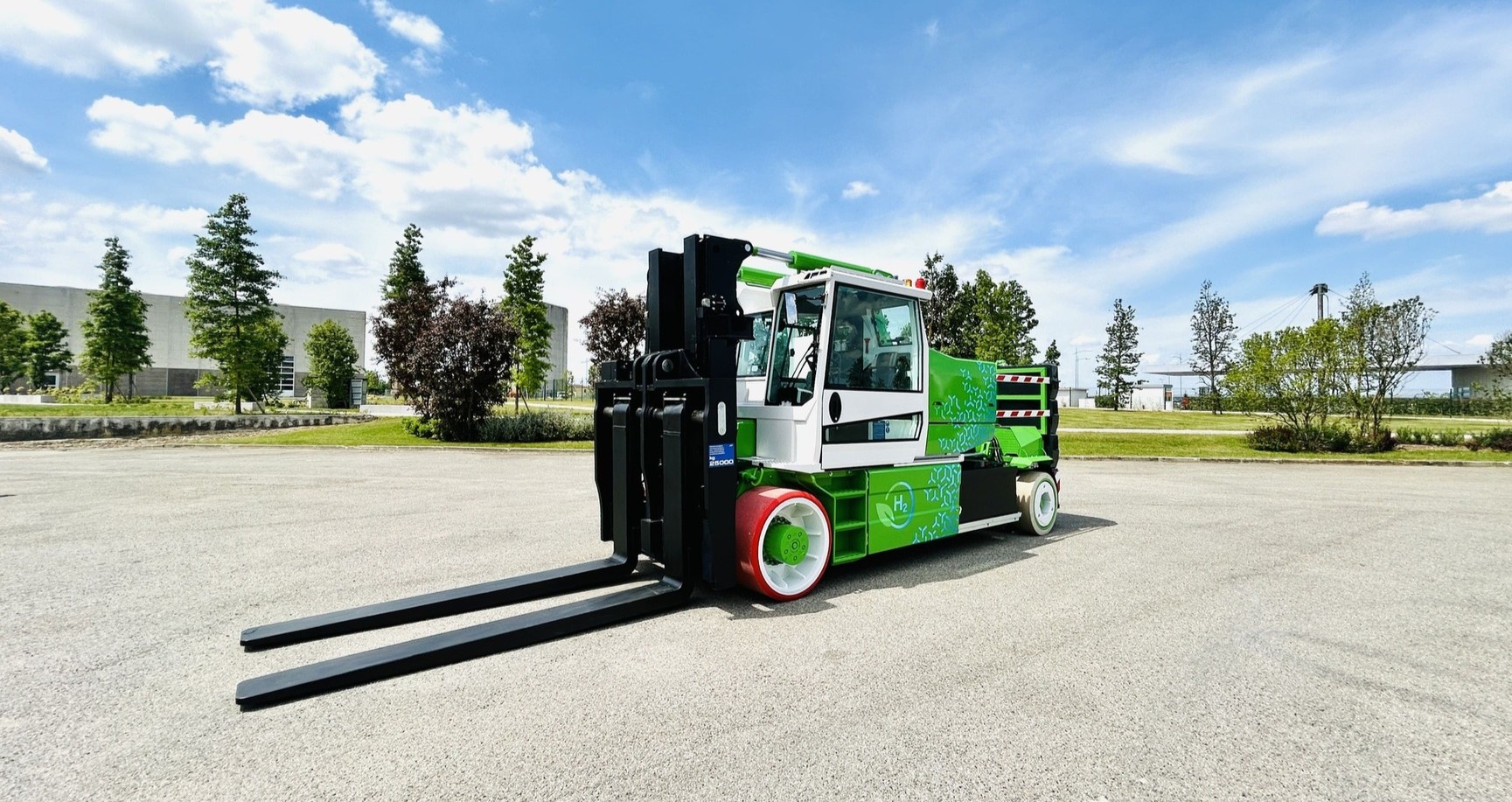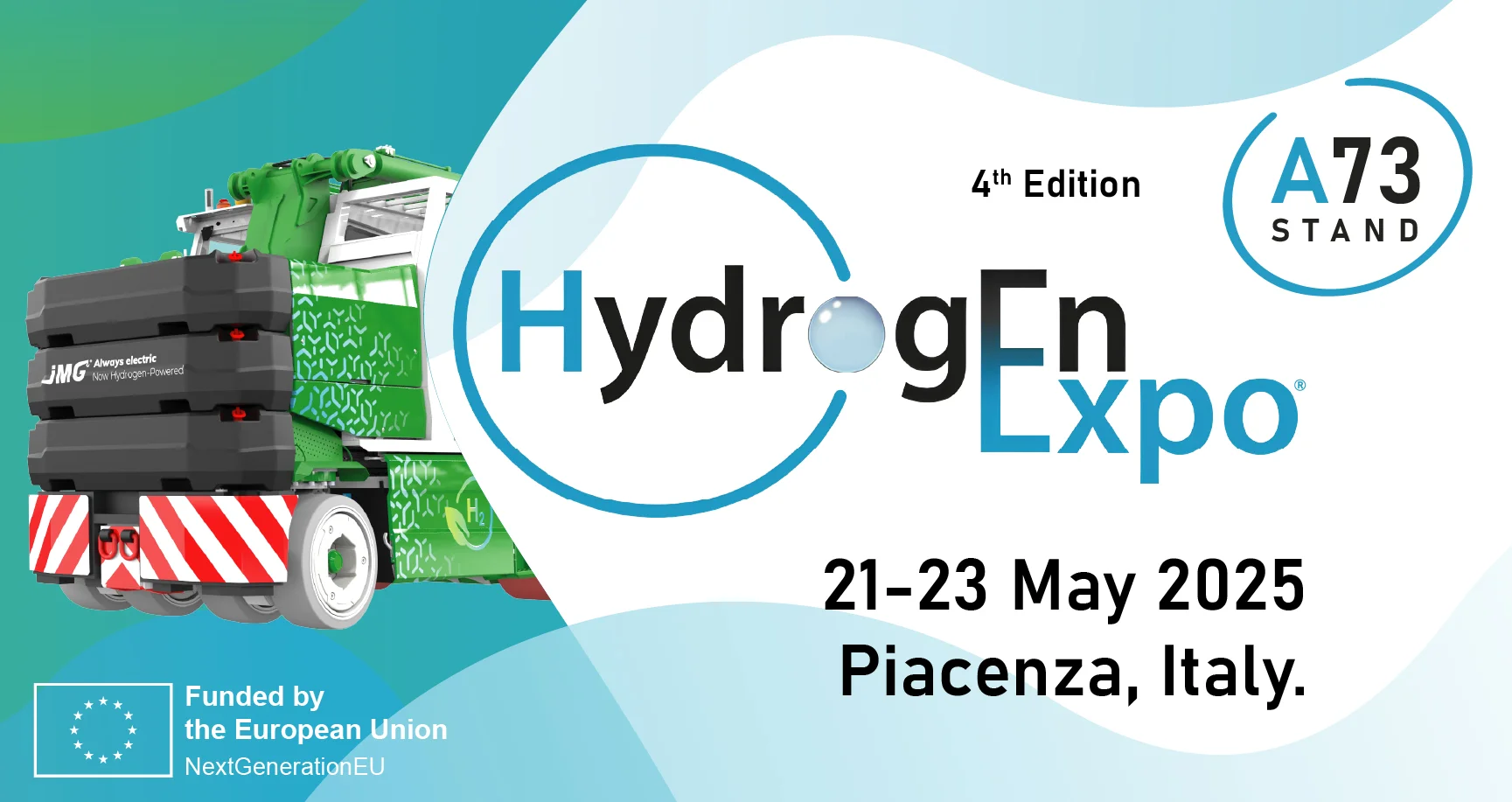
Since its inception, the MC250.09FL has represented a new concept in heavy industrial handling equipmentan electric forklift with front-wheel drive, rear steering and removable counterweights, designed to lift heavy loads positioned very close to the machine's centre of gravity and, at the same time, at height.
Thanks to an integrated cab, remote control via radio remote control and a variable wheelbase chassis (extendable to the rear by 1,200 mm), MC250.09FL immediately stood out for its versatility and operational stability.
The mast can be configured with a fork carrier plate or with a hydraulic boom equipped with dedicated electronics, load indicator and tilting moment limiting device, significantly extending reach and swing capabilities.
One of its main strengths is also the dual four-wheel steering unit, developed to efficiently unload the weight on the rear axle and preserve the structural integrity of the machine over time, overcoming the limitations of traditional forklifts.
From 21 to 23 May 2025, JMG sarà tra i protagonisti di Hydrogen Expo , JMG will be among the protagonists at Hydrogen Expo in Piacenza (stand A73), where it will officially present the first prototype of the hydrogen-powered MC250.09FL. A symbolic and technical debut - commercialisation is scheduled for 2026 - that represents the first concrete step of an R&D path strongly desired by the company and guided directly by founder and CEO Maurizio Manzini.
At the heart of the new version of the MC250.09FL is the FCH 96V module, a fuel cell system with PEFC (Polymer Electrolyte Fuel Cell) technology combined with a 6 kg tank of hydrogen at 350 bar, 144 cells capable of delivering a constant power of 20 kW each, lithium buffer battery of 30 kWh and a complete servo system (humidifier, air exchanger, control electronics, safety devices).

The layout of the new system closely follows that of the battery box of the standard version of the forklift crane: weight, dimensions and mechanical/electrical connections are identical. This makes the hydrogen module de facto interchangeable with the original 96 V, 1,050 Ah lead-acid system, which was offered divided into two 1,500 kg battery boxes each. The work required to switch to the fuel cell configuration is limited to the repositioning of the electrical cables - from left and right to both on the right side - and the addition of a simple can-bus wiring harness, already planned as standard from 2026.
For its operation, the MC250.09FL draws energy from the lithium battery, which provides up to two hours of autonomy. In the meantime, the fuel cell kicks in and generates energy to recharge the lithium battery, bringing the total range to around 5-6 hours.
The operating logic is optimised to activate the hydrogen cell only when the lithium battery falls below a certain threshold, and keep it running until fully recharged. The other big advantage is the speed of refuelling: it only takes five minutes to fill the tank from a 450 bar recharge point using an OMB Saleri nozzle that conforms to the SAE J2600 profile. A minimum time that allows you to get back to work quickly, reducing downtime compared to traditional electric recharging, which requires 9 hours or a physical replacement of the tanks (not an immediate operation in any case).
In the absence of hydrogen, it is in any case possible to recharge the lithium battery in about 90 minutes using the suitably configured on-board chargers, achieving an autonomy of between 2 and 3 hours.
TheHydrogen Expo therefore marks a milestone for JMG, which confirms its pioneering vision in the energy transition of industrial lifting by introducing a flexible, scalable energy system suitable for intensive work cycles.

| Component | Technical specification |
| Hydrogen tank | 6 kg @ 350 bar |
| Fuel cells | 144 PEFC cells - 20 kW continuous power |
| Buffer battery | 30 kWh lithium-ion |
| Estimated autonomy | 5-6 hours in combined operation |
| Hydrogen refuelling time | ~5 minutes from tank to 450 bar |
| Refuelling connection | OMB Saleri gun, standard SAE J2600 |
| Noise when stationary (fuel cell active) | 67 dB |
| Mechanical compatibility | Box interchangeable with lead-acid version |
| Electrical compatibility | Same quick connectors; cable + can-bus modification required |

The system uses a fuel cell module (PEFC) with a hydrogen tank that generates energy to recharge a lithium buffer battery. Energy for operation is drawn from the battery, which is kept charged by the fuel cell that is activated as needed.
The estimated range in combined operation (lithium battery + fuel cell) is about 5-6 hours.
Hydrogen refueling takes about 5 minutes from a 450-bar charging point.
Yes, the layout of the hydrogen system traces that of the standard battery box, making it effectively interchangeable with the original lead-acid system with minimal work on the wiring.
The hydrogen version is scheduled to be commercialized in 2026.
Yes, in the absence of hydrogen it is possible to recharge the lithium battery in about 90 minutes via on-board chargers, resulting in a range of 2-3 hours.

JMG Cranes designs and manufactures battery-powered electric self-propelled cranes from 0.9 to 70 tons that find application in a wide range of industries.
Registered Office:
Via Dante, 15 26100 CREMONA (CR)
Commercial Headquarters - Service & Spare Parts - Customer Administration
Via Bergamo, 142 - 26100 CREMONA (CR)
Production Headquarters
Via Zuccherificio, 3 29010 - SARMATO (PC)
© 2025 JMG Cranes S.p.A. |
P.Iva 05896090965